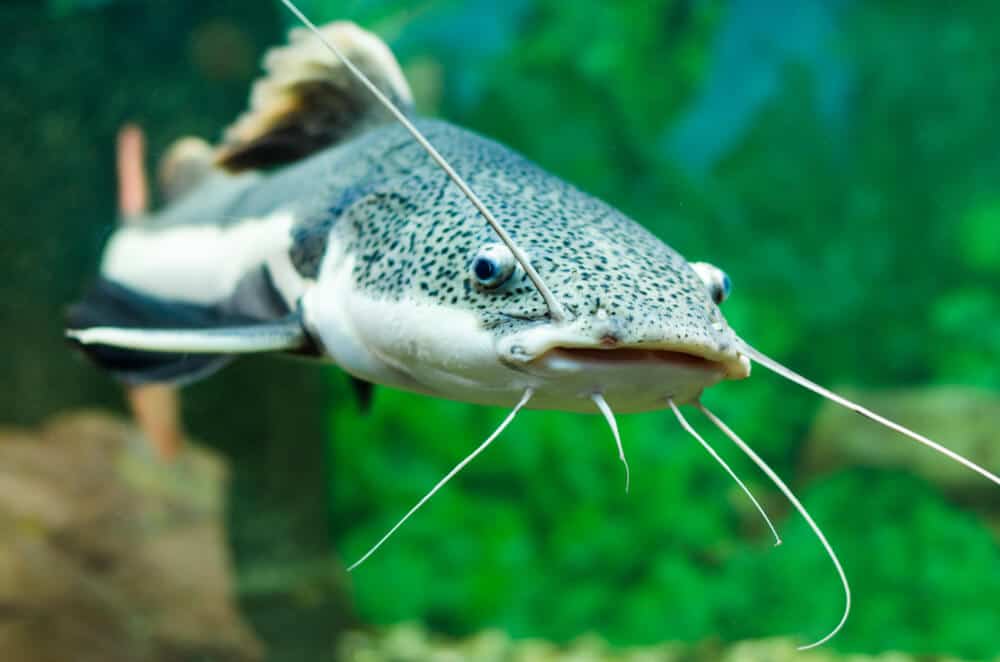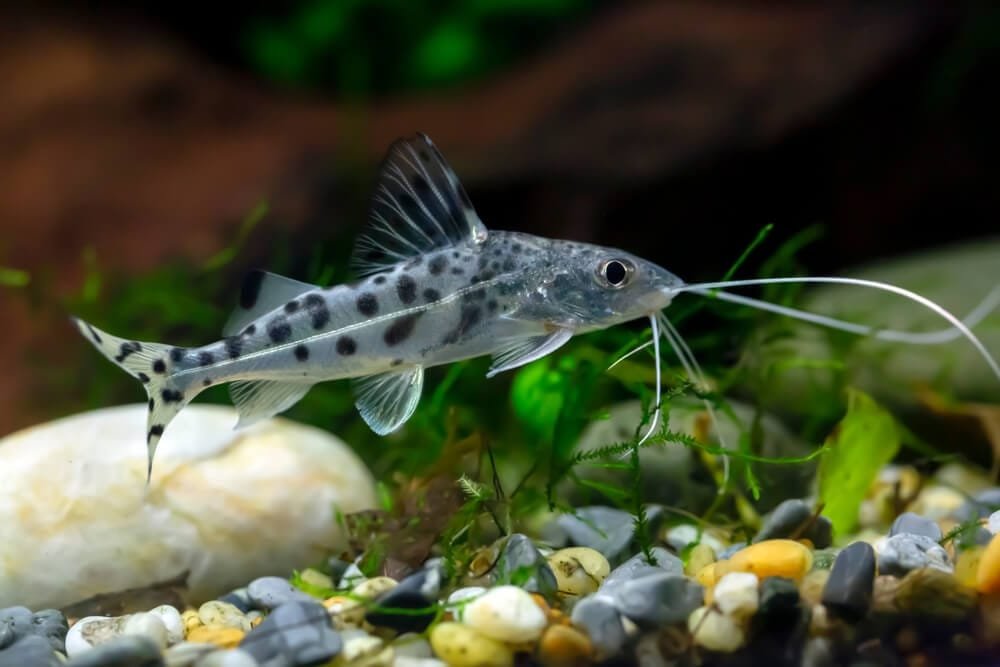What Diseases Are Common In Kuhli Loaches And How Can I Treat Them?
If you’re the proud owner of Kuhli Loaches, it’s important to be aware of the potential diseases that can affect them and how to effectively treat them. Whether you’re a seasoned fish enthusiast or new to the world of Kuhli Loaches, this article will provide you with valuable information on the commonly occurring diseases in these unique freshwater fish and the best treatment methods to ensure their optimal health and well-being.
Bacterial Infections
Bacterial infections are a common concern for Kuhli Loaches. Three specific types of bacterial infections that affect these fish are Columnaris, Fin Rot, and Mouth Rot.
Columnaris, also known as Cotton Wool Disease, is caused by the bacteria Flavobacterium columnare. It presents as white or gray patches on the skin, fins, and gills, giving a cotton-like appearance. To treat Columnaris, it is important to remove any affected fish from the main tank and place them in a separate quarantine tank. A combination of antibiotics, such as erythromycin or tetracycline, can be added to the quarantine tank water to combat the bacterial infection.
Fin Rot is another bacterial infection commonly seen in Kuhli Loaches. It is caused by various bacteria, including Aeromonas and Pseudomonas. Symptoms of Fin Rot include frayed, discolored, or decaying fins. If your Kuhli Loach is affected by Fin Rot, it is crucial to maintain clean and well-filtered water conditions. Regular water changes and the application of antibiotic medications, such as those containing kanamycin or nitrofurazone, can help treat this infection.
Mouth Rot, or Aeromonas infection, is characterized by inflamed and swollen mouth tissues, along with the presence of white patches or sores. This bacterial infection often results from poor water quality, stress, or an underlying condition weakening the fish’s immune system. Isolating the affected fish and administering an appropriate antibiotic treatment, such as those containing aminoglycosides, can help control Mouth Rot.
Parasitic Infections
Parasitic infections are another common issue for Kuhli Loaches. It is essential to be aware of parasites like Ich, Flukes, and Anchor Worms that can affect their health.
Ich, scientifically known as Ichthyophthirius multifiliis, is a highly contagious protozoan parasite. It presents as small white spots resembling grains of salt on the fish’s body and fins. To treat Ich, raising the tank temperature to around 86°F (30°C) for a few days helps accelerate the parasite’s life cycle and makes them more susceptible to medication. Adding a suitable Ich medication, such as malachite green or copper sulfate, to the water is also effective in eliminating these parasites.
Flukes are another common parasite that can infect Kuhli Loaches. These flatworms attach themselves to the fish’s gills, causing irritation, labored breathing, and excessive mucus production. Treating Flukes typically involves adding medications like praziquantel or formalin to the water, which effectively eliminate these parasites.
Anchor Worms are crustacean parasites that burrow into the fish’s skin, causing irritation, redness, and ulcers. These parasites can be manually removed using tweezers or a similar tool. After removal, treating the affected fish with a suitable antiparasitic medication, such as potassium permanganate or a formalin solution, is necessary to eliminate any remaining parasites.
Fungal Infections
Fungal infections are also a concern for Kuhli Loaches. Two common fungal infections are Cotton Wool Disease and Saprolegnia.
Cotton Wool Disease, caused by the fungus Saprolegnia, appears as white or grayish fluff on the fish’s body, fins, or gills. To treat this infection, it is crucial to improve water quality by maintaining proper filtration and ensuring optimal oxygenation of the tank. Additionally, antifungal medications like malachite green or methylene blue can be added to the tank water to eliminate the fungal infection.
Saprolegnia is another type of fungus that can infect Kuhli Loaches. It causes a white or grayish slimy growth on the skin, fins, or gills. Like with Cotton Wool Disease, maintaining clean water conditions and adding antifungal medications are essential for treating Saprolegnia. Ensuring adequate aeration and reducing overall stress levels in the tank can also assist in preventing the fungal infection from spreading.
Protozoan Infections
Protozoan infections, caused by single-celled organisms, are a common health concern for Kuhli Loaches. Three specific protozoan infections that affect these fish are Hexamita, Costia, and Ichthyophthirius Multifiliis.
Hexamita, also known as Hole in the Head disease, is caused by the parasite Hexamita spp. It presents as small pits or holes in the fish’s head, giving the disease its name. Poor water quality and stress contribute to the development of Hexamita. To treat this infection, improving water quality through regular water changes and the addition of freshwater aquarium salt is crucial. Medications containing metronidazole or nitrofurazone can also be added to the tank water to combat Hexamita.
Costia is a microscopic parasite that affects the skin and gills of Kuhli Loaches, causing irritation, excessive mucus production, and respiratory issues. To treat this infection, it is important to maintain optimal water quality with proper filtration and regular water changes. Medications containing formalin or malachite green can be added to the tank water to eliminate Costia.
Ichthyophthirius Multifiliis, commonly known as Ich, has already been discussed in the section on parasitic infections. However, it is worth noting that Ich is a protozoan infection that affects not only the skin but also the gills of Kuhli Loaches. Therefore, treating Ich requires following the same steps mentioned earlier, such as raising the tank temperature and administering suitable medications.
Viral Infections
Viral infections among Kuhli Loaches are relatively uncommon. However, one viral infection that can affect them is Lymphocystis.
Lymphocystis is a viral infection that causes the growth of white or pinkish bulbous lesions on the fish’s body, fins, or mouth. These growths may resemble cauliflower-like structures. Unfortunately, there is no cure for Lymphocystis. The infection often resolves on its own over time, as the fish’s immune system fights it off. However, maintaining clean water conditions and minimizing stress can aid in the healing process.
Digestive Issues
Digestive issues are not uncommon in Kuhli Loaches. Two specific digestive issues to be aware of are constipation and bloat.
Constipation can occur when Kuhli Loaches consume excessive amounts of dry or low-fiber foods. This condition is often characterized by a lack of appetite, bloating, and infrequent or small fecal matter. To alleviate constipation, it is recommended to feed the fish a high-fiber diet consisting of live or frozen foods, such as brine shrimp or daphnia. Adding softened or blanched vegetables, like peas, to their diet can also aid in relieving constipation.
Bloat, also known as swim bladder disorder, is another digestive issue that affects Kuhli Loaches. It is caused by an abnormal buildup of gases in the fish’s swim bladder, leading to buoyancy problems and an inability to control their swimming. Feeding a varied and balanced diet, avoiding overfeeding, and ensuring the fish have ample hiding spaces to relieve stress can help prevent the development of bloat. In severe cases, it may be necessary to treat bloat with the assistance of a veterinarian, who can offer treatments like antibiotic therapy or manual decompression of the swim bladder.
Skin and External Conditions
Various skin and external conditions can affect Kuhli Loaches. Three specific conditions to watch out for are Fin and Tail Rot, Ulcers, and Open Wounds.
Fin and Tail Rot, previously discussed under bacterial infections, can also result from external causes such as poor water quality or injuries. Maintaining clean water conditions, treating any bacterial infections promptly, and minimizing the risk of injury can help prevent and treat Fin and Tail Rot.
Ulcers are open sores that can occur on the Kuhli Loach’s body, often resulting from external damage or bacterial infections. Treating underlying bacterial infections, providing clean water conditions, and adding aquarium salt to the tank water can help in healing ulcers faster.
Open wounds often occur as a result of injuries caused by sharp decor or aggressive tank mates. In such cases, removing the injured fish from the main tank and placing it in a separate, well-filtered quarantine tank is essential to prevent further damage and infection. Regular water changes, the addition of appropriate medications for minor infections, and a peaceful environment for the fish to recover can aid in the healing process.
Respiratory Problems
Respiratory problems can be detrimental to the health of Kuhli Loaches. Two specific respiratory issues to be aware of are Gill Flukes and Respiratory Infections.
Gill Flukes are parasites that attach themselves to the fish’s gills, leading to labored breathing, increased mucus production, and visible irritation. To treat Gill Flukes, adding medications like praziquantel to the tank water is essential. Additionally, improving water quality through frequent water changes helps support the fish’s respiratory health.
Respiratory infections, often caused by bacteria or other pathogens, can result in symptoms such as rapid or labored breathing, lethargy, and loss of appetite. Treating these infections requires a suitable antibiotic medication that targets the specific pathogens causing the respiratory issues. Maintaining clean and well-filtered water conditions, along with minimizing stress, can also aid in preventing and managing respiratory infections.
Behavioral Issues
Behavioral issues can arise in Kuhli Loaches due to various factors. Two specific behavioral issues to be aware of are stress and aggressive behavior.
Stress can occur due to poor water conditions, overcrowding, incompatible tank mates, or sudden changes in their environment. Minimizing stress in the tank can be achieved by maintaining optimal water quality, ensuring ample hiding spaces, and providing a peaceful and well-matched community of fish. If stress-related behavioral issues persist, it may be necessary to evaluate and address any underlying factors causing stress.
Aggressive behavior can be observed in Kuhli Loaches, especially when they feel threatened or are in the presence of aggressive tank mates. To prevent aggression, it is critical to select tank mates that are compatible in terms of size and temperament. Providing ample hiding spaces, such as caves or dense vegetation, can also help Kuhli Loaches feel more secure and minimize aggressive behavior.
Environmental Factors
Environmental factors play a crucial role in the overall health and well-being of Kuhli Loaches. Two significant environmental factors to consider are water quality and diet.
Maintaining optimal water quality is essential for the health of Kuhli Loaches. Regular water changes, proper filtration, and monitoring water parameters (such as temperature, pH, and ammonia levels) are crucial. Ensuring that the water is free from contaminants and providing a suitable environment by mimicking their natural habitat can significantly reduce the risk of diseases and improve overall health.
A well-balanced diet is equally important for Kuhli Loaches’ health and disease prevention. Offering a varied diet consisting of high-quality dry, frozen, and live foods provides essential nutrients and helps strengthen their immune system. It is important to avoid overfeeding and choose foods that meet their specific nutritional requirements.
By understanding and addressing these common diseases and health concerns, you can ensure the well-being of your Kuhli Loaches and provide them with a clean and comfortable environment. Regular observation, prompt treatment, and preventive measures can go a long way in maintaining the health and vitality of these beautiful fish.





